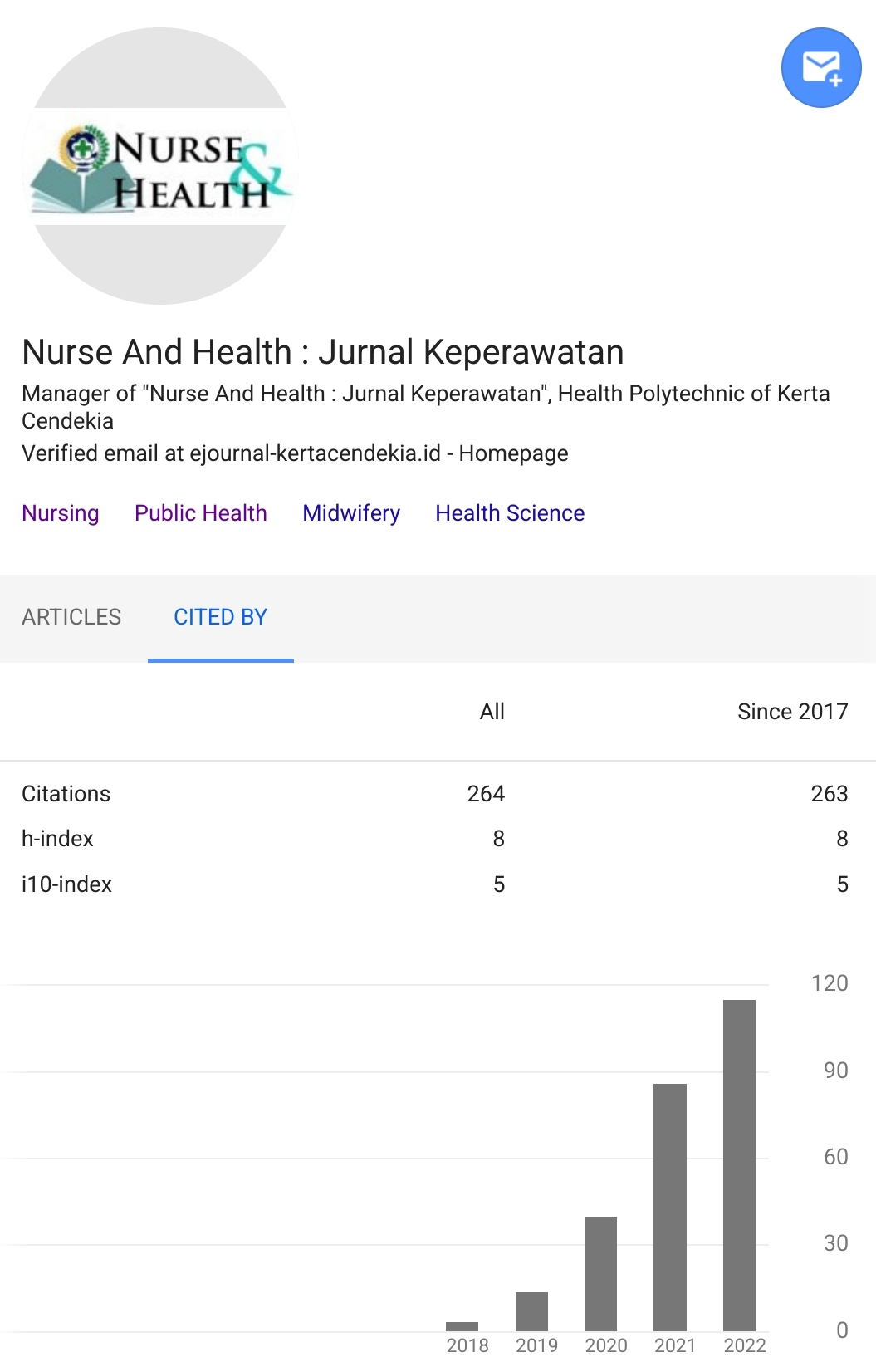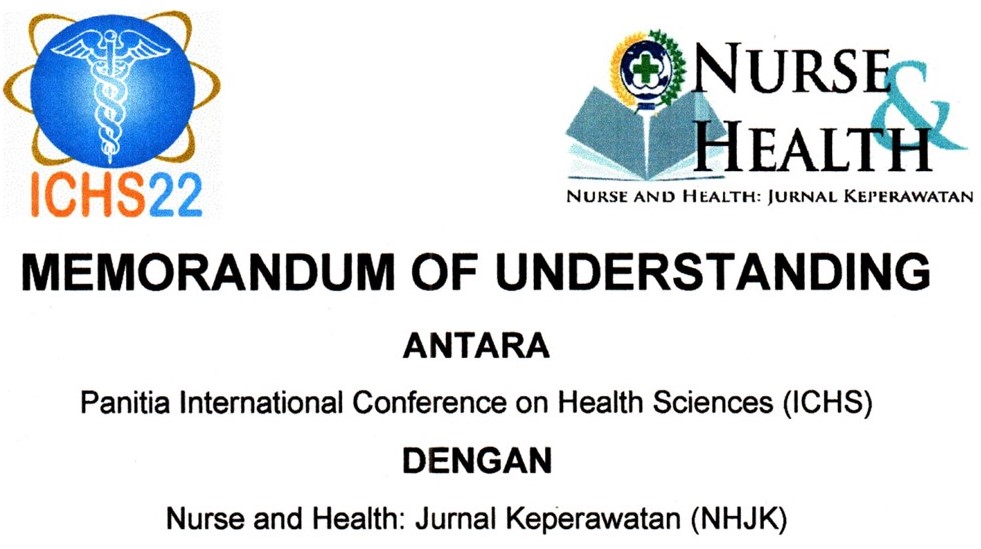RELATIONSHIP BETWEEN THE ROLE OF FAMILIES IN DIET SUPERVISION AND THE LEVEL OF COMPLIANCE OF DIETARY MANAGEMENT AMONG TYPE 2 DIABETES MELLITUS PATIENTS IN KEBONSARI VILLAGE, CANDI SUB-DISTRICT, SIDOARJO DISTRICT
Abstract
Background: The Indonesia Sehat Program is a program to improve the quality of life of the Indonesian people. The target of this program is to improve the health and nutritional status of the community through health and community empowerment efforts supported by financial protection and equitable distribution of health services. The latest estimate of the International Diabetes Federation, there are 382 million people living with Diabetes in the world in 2013. By 2035 this number is expected to increase to 592 million people.Objectives: This study aimed to determine the relationship between the role of families in diet monitoring with the level of compliance with Type II Diabetes Mellitus patients in carrying out the Diabetes Mellitus diet at Kebonsari Candi Sidoarjo.Method: This study used correlational design with a sample of 25 people. Samples were obtained using total sampling method. The instrument used to obtain data in this study is a questionnaire. The data obtained were then analyzed by using the Spearman test with p ≤ 0,01.Results: Families who play an active role in the supervision of diabetic patients with diabetes mellitus are related to the level of patient compliance in the obedient category of 44%. Based on the Spearman Rank test with p <0.01, the correlation level is 0.600. It can be concluded that there is a relationship between the role of families in diet monitoring and the level of adherence to type 2 diabetes mellitus patients in carrying out a diabetes mellitus diet has a strong level of correlation.Conclusion: Families are required to play an active role in supervising diabetics in carrying out the diabetes mellitus diet so that it can prevent complications of the disease and the quality of life of the sufferer. Key words: The Role of Families, Diet Compliance, Type 2 Diabetes MellitusDownloads
References
Almatsier, S. (2006). Higiene dan Sanitasi Pengolahan Makanan. Jakarta: PT. Gramedia Pustaka Utama.
Arisman, M. B. (2008). Obesitas. Diabetes Mellitus, dan Dislipidemia. Jakarta: EGC, 167-169.
Azwar, S. (2005). Sikap Manusia Teori dan Penerapannya. Yogyakarta: Pustaka Pelajar.
Bustan, M. N. (2007). Epidemiologi penyakit tidak menular. Jakarta: Rineka Cipta.
García-Pérez, L. E., Álvarez, M., Dilla, T., Gil-Guillén, V., & Orozco-Beltrán, D. (2013). Adherence to therapies in patients with type 2 diabetes. Diabetes Therapy, 4(2), 175-194.
Kautzky-Willer, A., Harreiter, J., & Pacini, G. (2016). Sex and gender differences in risk, pathophysiology and complications of type 2 diabetes mellitus. Endocrine reviews, 37(3), 278-316.
KEMENKES. (2013). Situasi dan analisis diabetes. Jakarta: Kementerian Kesehatan RI.
Kirkman, M. S., Briscoe, V. J., Clark, N., Florez, H., Haas, L. B., Halter, J. B., ... & Pratley, R. E. (2012). Diabetes in older adults. Diabetes care, 35(12), 2650-2664.
Miller, T. A., & DiMatteo, M. R. (2013). Importance of family/social support and impact on adherence to diabetic therapy. Diabetes, metabolic syndrome and obesity: targets and therapy, 6, 421.
Nursalam. (2013). Konsep dan Penerapan Metodologi Penelitian Kesehatan. Jakarta: Rineka Cipta.
Putra, K.W.R. (2016). Self-efficacy, psychological stress, family support, and eating behavior on type 2 diabetes mellitus. Belitung Nursing Journal, 2(1), 3-7.
Siddiqui, M. A., Khan, M. F., & Carline, T. E. (2013). Gender differences in living with diabetes mellitus. Materia socio-medica, 25(2), 140.
Smeltzer, S. C., & Brenda, G. Bare. (2004). Brunner and Suddarth’s Textbook of Medical-Surgical Nursing. Philadelpia: Lippincott.
Slamet, S. (2007). Pedoman Diet Diabetes Melitus. Jakarta: Departemen Ilmu Peyakit Dalam FKUI.
Tjokroprawiro, A. (2004). Jenis Pola Diet Penderita Diabetes Mellitus. Jakarta: Gramedia Pustaka.
Authors who publish with Nurse and Health: Jurnal Keperawatan agree to the following terms:
- Authors retain copyright licensed under a Creative Commons Attribution-NonCommercial 4.0 (CC BY-NC 4.0), which allows others to remix, tweak, and build upon the authors' work non-commercially, and although the others' new works must also acknowledge the authors and be non-commercial, they don't have to license their derivative works on the same terms.
- Authors are permitted and encouraged to post their work online (e.g., in institutional repositories or on their website) prior to and during the submission process, as it can lead to productive exchanges, as well as earlier and greater citation of published work (See The Effect of Open Access). Authors can archive pre-print and post-print or publisher's version/PDF.






















